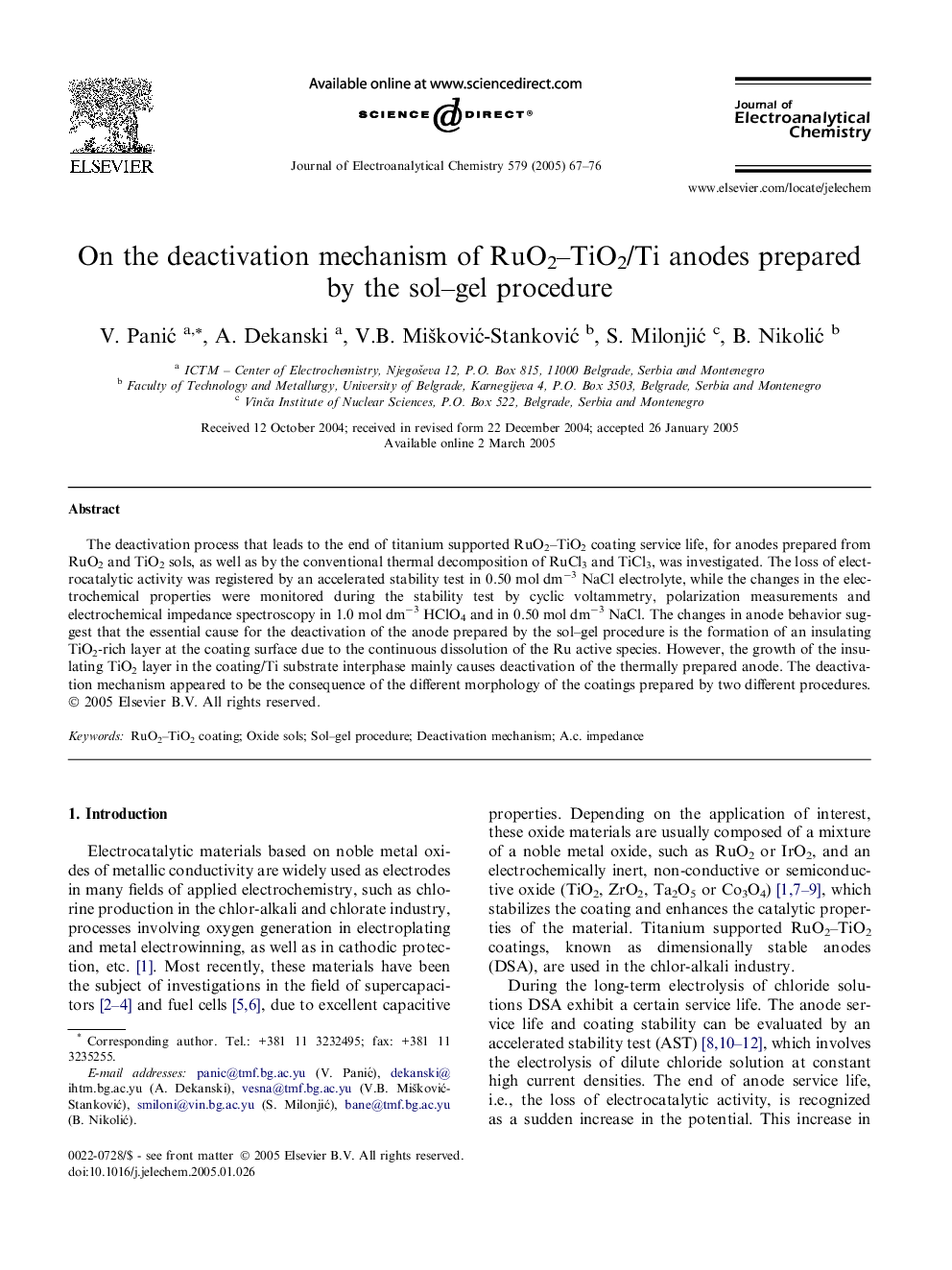| Article ID | Journal | Published Year | Pages | File Type |
|---|---|---|---|---|
| 10275902 | Journal of Electroanalytical Chemistry | 2005 | 10 Pages |
Abstract
The deactivation process that leads to the end of titanium supported RuO2-TiO2 coating service life, for anodes prepared from RuO2 and TiO2 sols, as well as by the conventional thermal decomposition of RuCl3 and TiCl3, was investigated. The loss of electrocatalytic activity was registered by an accelerated stability test in 0.50 mol dmâ3 NaCl electrolyte, while the changes in the electrochemical properties were monitored during the stability test by cyclic voltammetry, polarization measurements and electrochemical impedance spectroscopy in 1.0 mol dmâ3 HClO4 and in 0.50 mol dmâ3 NaCl. The changes in anode behavior suggest that the essential cause for the deactivation of the anode prepared by the sol-gel procedure is the formation of an insulating TiO2-rich layer at the coating surface due to the continuous dissolution of the Ru active species. However, the growth of the insulating TiO2 layer in the coating/Ti substrate interphase mainly causes deactivation of the thermally prepared anode. The deactivation mechanism appeared to be the consequence of the different morphology of the coatings prepared by two different procedures.
Keywords
Related Topics
Physical Sciences and Engineering
Chemical Engineering
Chemical Engineering (General)
Authors
V. PaniÄ, A. Dekanski, V.B. MiÅ¡koviÄ-StankoviÄ, S. MilonjiÄ, B. NikoliÄ,
